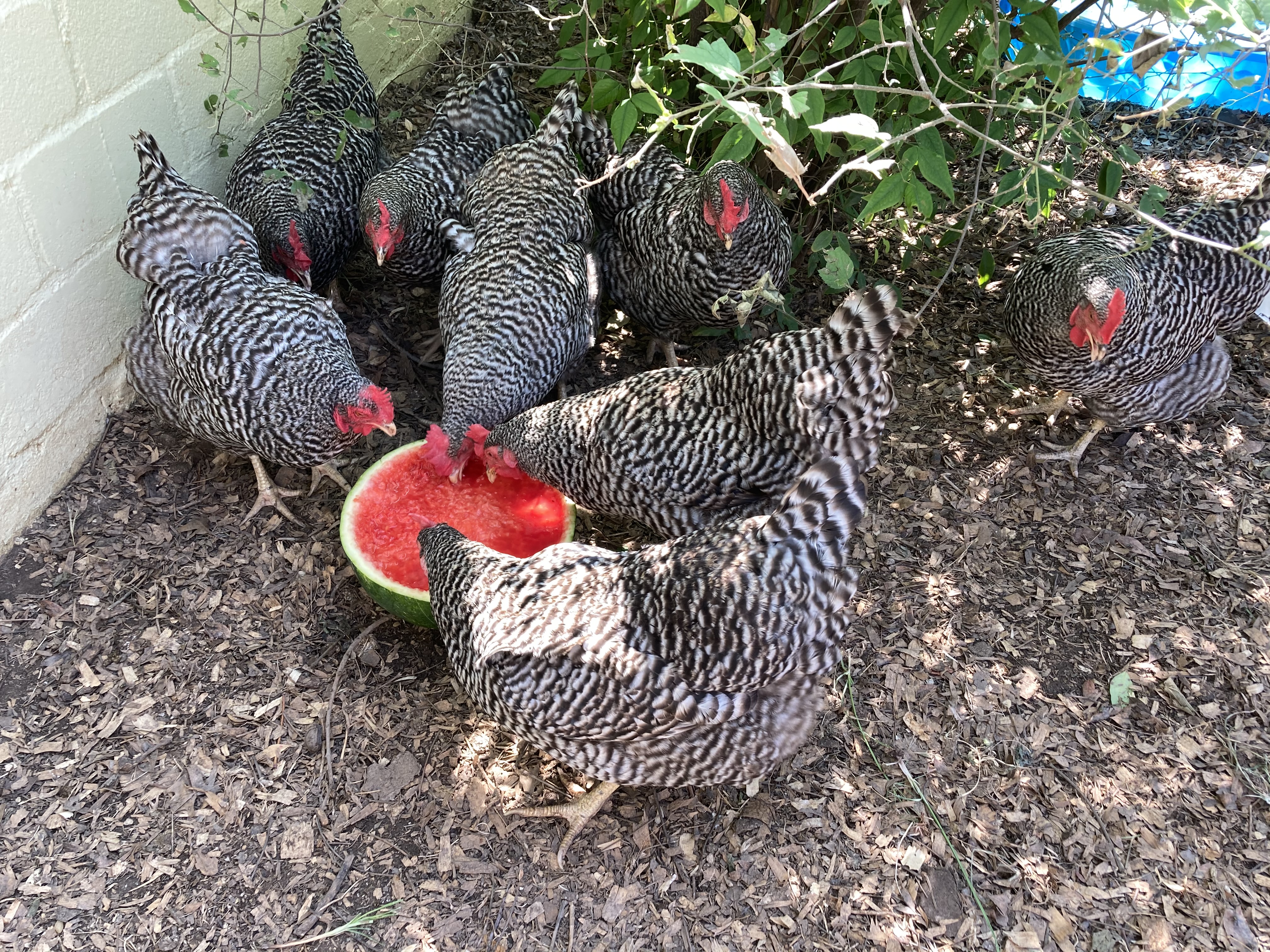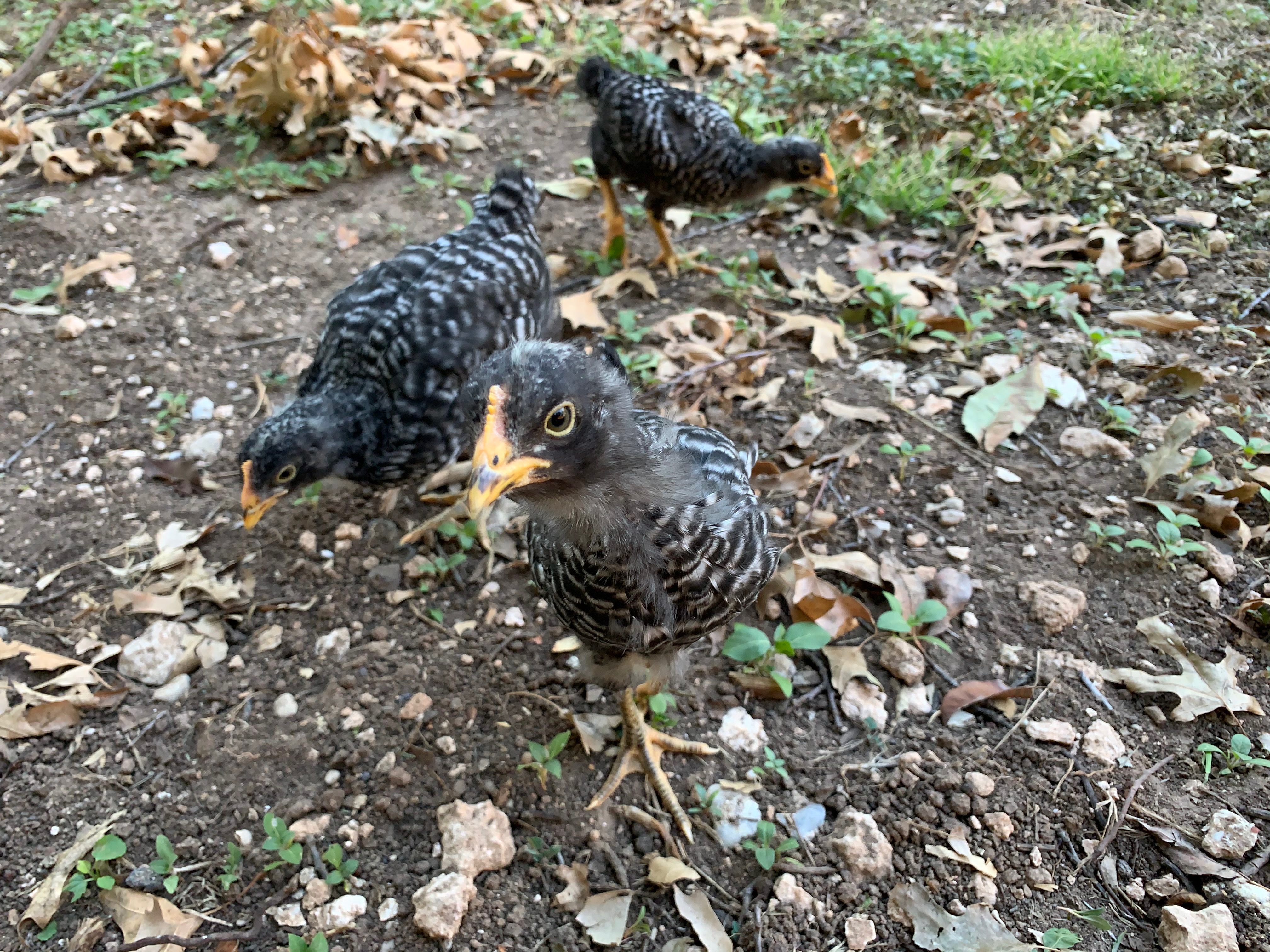A common question among people who are interested in getting chickens is “how many chickens should you start with?” The answer to this question will vary depending on your circumstances, like how much are you willing to spend on your chickens every month and how much space will you have available for the chickens.
In general, 3 to 4 chickens is a good number of chickens to start with as a beginner. Chickens are social creatures so this number will be good for their well-being, but is also a manageable amount for a beginner. For beginners who are willing to invest a bit more money, space, and time, up to 10 chickens is easily manageable.
Keep reading to learn about some of the factors you should consider when deciding how many chickens to get.
Number of Chickens You Can Afford
Raising backyard chickens can be expensive. On average, it costs $603 per year and $1,830 in one-time expenses to raise a flock of 5 to 10 chickens. While these numbers might give some people a heart attack, I have found they are very realistic. When you consider that the average lifespan of a chickens is 8 years, that adds up to $6,654! Check out this post for the full breakdown of costs and rationale behind this estimate.
The cost of the coop will be the most expensive item many people purchase for their chickens. Even if you plan to do a DIY coop using reclaimed materials, you will most likely still need to buy supplies, like half inch hardware cloth, screws, hinges, etc. A DIY coop costs on average between $50 to $100. In this post, I talk about our DIY chicken coop and why it didn’t work out long term.

If you decide to purchase a kit, or pre-fab, coop, the price of these can vary quite a bit. I’ve seen some coops that cost as little as $200, but the reviews are terrible. Steven and I splurged and got the OverEZ large chicken coop for our backyard flock. We have 10 Barred Plymouth Rocks and they love their coop. We like it a lot too and it was a good investment to make for our chickens. Look at this post for a full review of the OverEZ large chicken coop and some modifications we made to make it more functional for our chickens.
I suggest you check out this post if you are still trying to decide what type of coop will work best for you. It contains information on the most important features to consider with a coop, like: whether you should get a fixed or portable coop, whether it should be walk-in or off the ground, if you should plan for an attached run, and a comparison of a kit vs. DIY coop.
After you have your chicken coop and have considered the cost to buy your chicks (their “adoption fees”), it will cost on average $439 per year (or $37 per month) to care for your chickens. Of course, this number will vary depending on how much feed your chickens eat, how many chickens you have, etc., but it serves as a good ballpark figure.
Number of Chickens You Can Fit in Your Yard
To be honest, I was way off in understanding how much space would be required before I got my chickens, particularly how much of my yard they would take over. I had no idea how destructive these tiny dinosaurs would be on my yard. At first, I allowed them to free range during the day, but before long I had no lawn, my garden had been eaten, and my potted plants had been crushed by chickens that used them as dust bathtubs.
In general, chickens should have between 3 to 4 square feet per chicken in a coop. If the chickens will be spending significant amount of time in the coop (for example, in the winter), then 5 square feet per chicken is recommended. Most chicken coops are the size of a small shed or a kid’s playhouse.

In addition to the chicken coop, you need to consider where will your chickens spend their day. Don’t plan on keeping your chickens in their coop full-time. Take into consideration that they will need room to roam outside of the coop. Chickens will need to have space to move around, stretch, scratch the ground, and dust bathe. Many people will set up a chicken run, which is a fenced off area for their chickens that is typically attached to the coop. On average, chickens should have between 8 to 10 square feet per chicken in a run.
I have written several posts about chicken runs. I did a review of the OverEZ walk-in 16 foot run that we use for our chickens. I have also written a post about the space requirements for chickens, including inside their coop and run, and also the space in your yard.
Number of Chickens You Can Handle with Your Schedule
Chickens are relatively low maintenance animals, but they still require daily care. Based on my routine, I spend about an hour every day taking care of my chickens.
My morning routine takes the longest, between 15 to 30 minutes. This is when I let the chickens out of the coop, give them fresh food and water, and check them for any changes in appearance or behavior. The chickens are always so excited to see me the morning, so I use this time to (try to) get some chicken snuggles. Chickens are most active first thing in the morning and again right before bedtime. I enjoy watching them scratch and peck at the ground and watching the interactions they have with each other.
In the evening, I will close the coop door and put up their food so no rodents or other animals eat it at night. If the chickens are already in their coop, this takes 5 minutes. If they are not all in the coop because it’s not quite dark enough, then it can take about half an hour waiting for them to go to roost.
You will also need to check on your chickens during inclement weather. If you see a thunderstorm on the radar, move the feed into the coop so it won’t get wet and make sure your chickens have a dry place to hang out during the storm. I have some chickens that like to be in their covered run during rain and others that like to go inside the coop.
When the weather is hot, I will check on my chickens more often. I make sure their water is fresh and clean at lunch and again after work. I will give them a refrigerated watermelon half every afternoon when the temperatures are really hot. This is one of their favorite treats and they have learned to look forward to it every day at the same time.

I wrote a post about the time and effort required to raise backyard chickens where I explained these things in more detail. I would also recommend this post in you live in a hot climate and need to keep your chickens cool during the summer. Living in West Texas, it’s not unusual to get temps above 100 degrees F in the shade during the summer, so I had to learn the best ways to keep my flock cool and healthy.
How Many Chickens You Should Get
In a natural setting, a hen will have a clutch size of 12 which will hatch into chicks in about 21 days. Taking into account the eggs that might not hatch, a typical brood size is 8 to 10 chicks. However, 8 to 10 chickens might be too many for a person new to chicken keeping.
A good minimum number of chickens for a beginner is 3 to 4 chickens. There are several reasons why I make this recommendation.
- Chickens are social creatures that have a complex social hierarchy, also called a pecking order. One chicken will be dominant and she will quite literally “rule the roost.” In order for there to be dominant chicken, there will need to be several submissive chickens. In general, it’s not healthy for a chicken to be the sole member of her flock.
- By adding a few other chickens to the flock, the chickens will be able to learn from each other. Chickens learn by investigating new objects with their beaks, while also watching what the other chickens do and how other chickens interact with each other. Although chicken brain size was reduced when they became domesticated from their wild jungle fowl ancestors, chickens are still highly intelligent animals, with their intelligence level comparable to that of a human toddler.
- Chickens have a preference for familiar objects in groups of at least 3. There have been studies that show chickens prefer a group of 3 familiar objects as opposed to 2. A familiar object could be a flock mate or even an inanimate object, like their waterer or feeder.
You can easily find 3 or 4 chicks that available for adoption at farm supply stores during the spring and summer. However, if you are looking for a particular breed of chicken it might be more difficult to find these at farm supply stores and you will need to special order them from a hatchery. If you order your chicks online and they are delivered by mail, there is usually a minimum order quantity of 10 chicks. By having a minimum of 10 chicks in the delivery, they are able to keep each other warm enough during the transit from the hatchery to your home. Chicks have a difficult time keeping themselves warm, which can lead to death. In this post, I mention the different ways you can buy your chickens: either day old chicks, chicks from a farm supply store, or when they are older and past the chick stage (pullets).

We ordered our Barred Plymouth Rocks from a hatchery online that had a minimum order quantity of 10 chicks. I had read online that there could be up to a 10% mortality rate during transit, so I prepared myself when the box of chirping chicks arrived. When I opened the box I was excited to see 10 were alive and chirpy! Do some research before buying your chicks to make sure you select a reputable hatchery or a farm supply store that humanely cares for their chicks to make sure you are getting healthy chickens.

